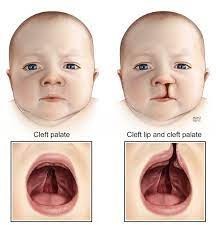Which assessment information is most important for the nurse to obtain when evaluating whether treatment of a patient with anaphylactic reaction has been effective?
Blood Pressure
Oxygen Saturation.
Heart Rate.
Orientation.
The Correct Answer is A
Anaphylaxis is a severe and potentially life-threatening allergic reaction that can lead to a rapid drop in blood pressure, known as hypotension. This drop in blood pressure is a critical indicator of the severity of the reaction and the effectiveness of the treatment provided. The nurse needs to monitor the patient's blood pressure closely to ensure it stabilizes and returns to a safe range.
While oxygen saturation, heart rate, and orientation are also important parameters to assess, they are secondary to blood pressure in evaluating the effectiveness of treatment for anaphylaxis. Oxygen saturation can help determine the adequacy of oxygenation, heart rate can indicate the presence of tachycardia (which may be a sign of an ongoing reaction or hypoperfusion), and orientation can provide information about the patient's mental status and potential complications.
Nursing Test Bank
Naxlex Comprehensive Predictor Exams
Related Questions
Correct Answer is C
Explanation
Nitroprusside is a potent vasodilator medication used to rapidly reduce blood pressure in hypertensive emergencies. Its primary action is to dilate blood vessels, leading to a decrease in systemic vascular resistance and subsequent reduction in blood pressure.
Monitoring the client's blood pressure is crucial during the administration of nitroprusside to ensure that the medication is achieving the desired effect and that blood pressure is being appropriately controlled. The nurse will assess blood pressure frequently to adjust the infusion rate and titrate the medication to achieve the desired therapeutic effect while avoiding hypotension or other adverse effects.
Correct Answer is C
Explanation
Suctioning secretions away from the suture line helps maintain the surgical site's cleanliness and promotes healing. It helps prevent accumulation of mucus or oral secretions that can interfere with the healing process and increase the risk of infection. The nurse should use a gentle suctioning technique to avoid disrupting the surgical site.
Applying Neosporin to the surgical site is not typically recommended unless specifically prescribed by the healthcare provider. It is important to follow the provider's instructions regarding wound care.
Applying elbow immobilizers when not being held is not necessary for cleft lip surgery. Elbow immobilizers are usually used in other surgical procedures or for other reasons, such as preventing contractures.
Feeding increased amounts of formula to prevent weight loss is not an appropriate intervention for the first few days after cleft lip surgery. The surgical site may be sensitive, and the child may experience difficulty with feeding initially. The nurse should provide guidance and support for feeding techniques appropriate for the child, which may include using specialized bottles or positioning techniques.

Whether you are a student looking to ace your exams or a practicing nurse seeking to enhance your expertise , our nursing education contents will empower you with the confidence and competence to make a difference in the lives of patients and become a respected leader in the healthcare field.
Visit Naxlex, invest in your future and unlock endless possibilities with our unparalleled nursing education contents today
Report Wrong Answer on the Current Question
Do you disagree with the answer? If yes, what is your expected answer? Explain.
Kindly be descriptive with the issue you are facing.
